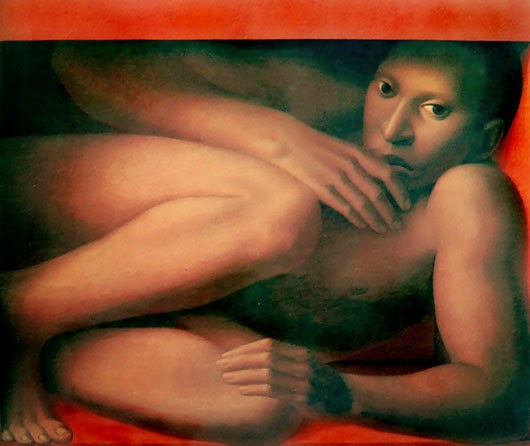By Stephen Berman. Boston Globe, 3 August 2009.
A COUPLE sits on a beach on a brilliant July day. They’ve just had a picnic lunch, and are in that hazy sweet space of watching the waves and the gulls, the passing sailboat, or, far out, the tanker. They feel close.
The woman, wanting to feel even more close, asks: “What are you feeling, hon?’’
Startled, the man blinks, glances at her, and not knowing what to say, says nothing.
The woman asks, “Can you tell me?’’
The man, wanting to respond and trying to gather his thoughts and feelings to do so, still comes up blank. A sense of panic blossoms in his gut and rises to his chest, cold and damp as if clenching his heart. Trying to stay calm he says, “I don’t know.’’
“Sure you do. Can you tell me?’’
The cold rises into his brain, all ice. Through gritted teeth he says, “Don’t spoil it!’’
The woman, startled by his tone and the glazed look in his eyes, says, “I’m spoiling it?’’
Things go downhill. They wind up miles apart, staring at nothing.
What is going on? In our work leading gender dialogues between thousands of men and women, boys and girls, Dr. Janet Surrey and I have come to understand this as a “relational impasse’’ - the “dread/yearning impasse.’’ If the woman, yearning to feel closer, approaches, often the man starts to feel “male relational dread,’’ and retreats. In his head is a little voice: “Nothing good can come of my going into this, it’s just a matter of how bad it will be before it’s over. And it will never be over!’’
As one man put it: “I woke up this morning and she turned to me and I was in dreadlock!’’ The paralytic feeling of dread is familiar to many men. It contains a sense of failure, humiliation, shame, and paranoia. It is part of normal male development - and it is hell on relationships. Anything, even the cap let off a tube of toothpaste, can trigger it. Relational dread is a basic human experience, although the male and female versions may take different forms. This is the male version.
How does male dread develop? A patient’s story gave me a clue. When he was 6, he had been beaten up at school. He wasn’t hurt physically, but felt terrible. He walked home up the railroad tracks through the woods so no one would see him crying, and couldn’t wait to tell his mother. He went in through the back door into the kitchen, anxious to tell her. She was at the sink. She turned around, saw the tears, and with concern asked, “What’s wrong, dear?’’ Despite wanting to tell her, he said, “Nothing,’’ turned away and walked back out.
What had arisen was not just in him - after all, he walked into the kitchen intending to tell her. But when she moved toward him emotionally - in the interaction between them - he felt exposed, and dread suddenly arose and did its damage. It was a relational impasse.
Although we all - boys and girls - come into the world with a primary desire for connection, there is an early fork in the path. Many boys are pushed by the culture to disconnect from their relationship with mother in order to grow, and become less valued for their relationships and more valued for themselves; while many girls continue to grow in relationships, and are valued as the carriers of connection in the culture.
But scratch our surface and you find that we men desire connection every bit as much as women, and get sick and even do sick things - think of all the destruction wrought by male “loners’’ - if we don’t experience it. Given the chance, we’re just as good at it as women - witness the revolution in fathering in the past few generations, fathers as caregivers. Male relational dread may arise from time to time, but male relational love, living “in the we’’ with a partner or a child or a dog or a student or a shortstop-or-dancer-in-training, is right there in us, waiting to prevail. We men yearn more than anything to live not in the “I’’ or the “you,’’ but in the “we.’’
Stephen Bergman, MD, is a guest columnist. Under the pen name Samuel Shem, he is the author of “The House of God’’ and “The Spirit of the Place.’’
